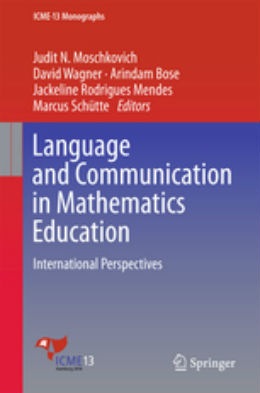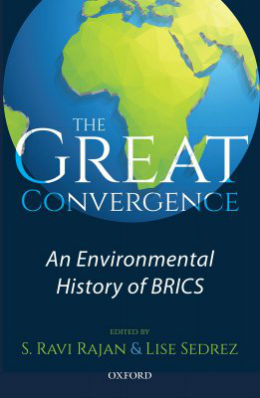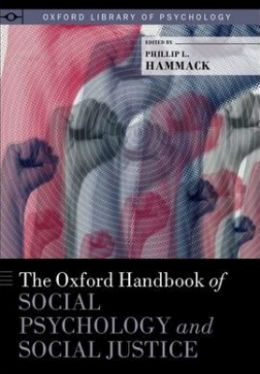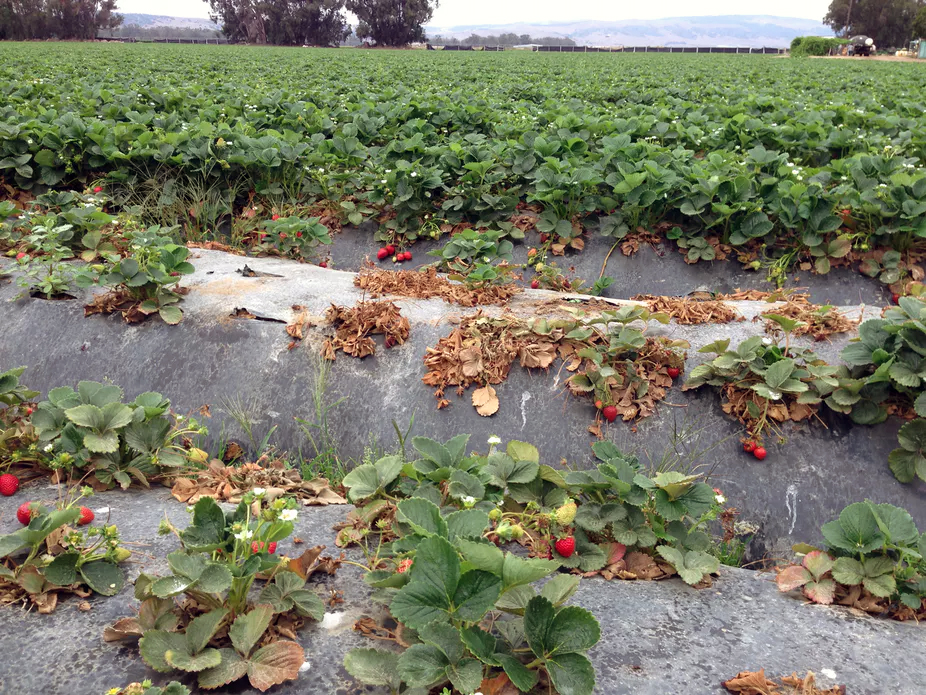Research Roundup highlights the work of faculty in the Division of Social Sciences who submitted citations in response to a call for submissions about recent publications. For ongoing coverage of UCSC research, please visit the UCSC Newscenter and In the News.
Anthropology
Professor Lissa Caldwell was interviewed on BBC Radio 5 Live as part of the series A to Tsar of Russia, with Adrian Chiles which focuses on some of the more unusual aspects of Russian life. She and other panelists fielded questions based on her book Dacha Idylls, in the segment entitled D – Duch-less, Russian Dance, and Dachas.
Economics
Professor Carlos Dobkin’s recent study, The economic consequences of hospital admissions, was cited in a New York Times article addressing the financial impacts of hospitalization. On aggregate, hospitalization and the health problems that cause it lead to a 20 percent drop in earnings and an 11 percent drop in employment for adults between ages 50 and 59, among other negative effects. The study was published in the latest issue of the American Economic Review. The co-authors are Amy Finkelstein, who is the John and Jennie S. MacDonald Professor of Economics at MIT; Carlos Dobkin, a professor of economics at the University of California, Santa Cruz; Raymond Kluender, a PhD student in economics at MIT; and Matthew Notowidigdo, an associate professor of economics at Northwestern University. This research was also highlighted in a MIT News feature article.
Education
Professor Ron Glass was one of four guest editors for a special issue of Urban Education. This issue brings together scholars who theorize and practice collaborative, community-engaged scholarship (CCES) in many diverse ways to address a set of issues confronting the emerging field. The articles developed from a conference process organized by the Urban Research Based Action Network (URBAN) in 2015 and supported financially by a grant from the American Educational Research Association. URBAN formed in 2012 as an intentionally cross-discipline, cross-issue learning community designed to advance the field of CCES, helping scholars to build connections across silos to learn from each other and share resources, building scholars' capacity to conduct CCES, supporting early career scholars, advocating for institutional changes within higher education, and building collaborations with education and community activists that democratize knowledge and promote equity-oriented change.
Professor Glass also led the Working Group that co-wrote one of the articles in the special issue, The ethical stakes of collaborative community-based research. This multivocal essay engages complex ethical issues raised in collaborative community-based research (CCBR). It critiques the fraught history and limiting conditions of current ethics codes and review processes, and engages persistent troubling questions about the ethicality of research practices and universities themselves. It cautions against positioning CCBR as a corrective that fully escapes these issues. The authors draw from a range of philosophic, African-centric, feminist, decolonial, Indigenous, and other critical theories to unsettle research ethics. Contributors point toward research ethics as a praxis of engagement with aggrieved communities in healing from and redressing historical trauma. One of Professor Glass' advanced doctoral students, Sheeva Sabati, received an URBAN-AERA Fellowship to staff the Ethics Working Group, and her substantive contributions were recognized with co-authorship of the article in the special issue of Urban Education.
An interview with Professor Glass was included in the recently published 50th anniversary edition of Paulo Freire’s classic work, Pedagogy of the Oppressed. First published in Portuguese in 1968, Freire's work has helped to empower countless people throughout the world and has taken on special urgency in the United States and Western Europe, where the creation of a permanent underclass among the underprivileged and minorities in cities and urban centers is ongoing.
Judit Moschkovich, professor of mathematics education and chair of the Education Department, co-edited Language and Communication in Mathematics Education: International Perspectives, and contributed the chapter International perspectives on language and communication in mathematics education. This book presents an international collection of research papers focusing on language and communication works in mathematics classrooms which demonstrate the wide range of theoretical and methodological resources that can contribute to this area of study, including those drawing on cross-disciplinary perspectives influenced by, among others, sociology, psychology, linguistics, and semiotics.
Professor Moschkovich also published the chapter Talking to learn mathematics: Supporting academic literacy in mathematics for English learners in Language, Literacy, and Learning in the STEM Disciplines, which describes how instruction can support students who are learning English in talking to learn mathematics.
Of note, Professor Moschkovich was recently inducted as an American Educational Research Association Fellow at the AERA conference in New York on April 14.
Environmental Studies
Professor Weixin Cheng and colleagues published Rhizosphere priming of grassland species under different water and nitrogen conditions: A mechanistic hypothesis of CN interactions, published in Plant and Soil. This paper discusses the role of the rhizosphere priming effect (RPE) in the decomposition of soil organic matter and the global carbon cycle to help determine how soil water and nitrogen status together alter the RPE.
Professor Greg Gilbert, along with close to 100 authors published Global importance of large-diameter trees in Global Ecology and Biogeography. They concluded from this study that because large-diameter trees constitute roughly half of the mature forest biomass worldwide, their dynamics and sensitivities to environmental change represent potentially large controls on global forest carbon cycling, and they recommend managing forests for conservation of existing large-diameter trees or those that can soon reach large diameters as a simple way to conserve and potentially enhance ecosystem services.
Professor Brent Haddad co-authored a study on Predictors of coastal stakeholders' knowledge about seawater desalination impacts on marine ecosystems, published in Science of The Total Environment. This study investigates variables that shape coastal stakeholders' knowledge about marine ecosystems and impacts of seawater desalination. Data were collected using a questionnaire-based survey administered to a random sample of coastal residents and commercial marine stakeholders in eight communities in central California. TV and social media were the only information sources that correlated negatively with knowledge. Predictors provide insights that could help target specific ocean literacy gaps. The study also finds that commercial marine stakeholders were more knowledgeable than other coastal residents. Having an economic stake in the marine environment appears to be a strong motivation to be more educated about the ocean.
Professor Karen D. Holl, with authors Holly P. Jones, Peter C. Jones, Edward B. Barbier, Ryan C. Blackburn, Jose M. Rey Benayas, Michelle McCrackin, Paula Meli, Daniel Montoya, and David Moreno Mateos published Restoration and repair of earth's damaged ecosystems. This meta-analysis of 400 studies worldwide that document recovery from large-scale disturbances suggests that though ecosystems are progressing toward recovery following disturbances, they rarely recover completely and call for a more strategic investment of limited restoration resources into innovative collaborative efforts between scientists, local communities and practitioners to develop restoration techniques that are ecologically, economically and socially viable.
Professor Michael Loik co-authored Effects of a heat wave on nocturnal stomatal conductance in eucalyptus camaldulensis in Forests. Researchers investigated nocturnal transpiration, which constitutes a significant yet poorly understood component of the global water cycle. Modeling nocturnal transpiration has been complicated by recent findings showing that stomata respond differently to environmental drivers over day- vs. night-time periods. The authors observed significant differences in response to the heat wave across genotypes, likely driven by local adaptation to their climate of origin, but CO2 played no effect.
Professor Flora Lu was profiled in the Santa Cruz Sentinel. The feature describes her work with indigenous groups in the Amazon rainforest, and her research on their interactions with the natural environment.
Professor Stacy Philpott and ENVS co-authors Monika Egerer and Peter Bichier, along with Heidi Liere, Brenda Lin, and Shalene Jha, published Herbivore regulation in urban agroecosystems: Direct and indirect effects in Basic and Applied Ecology. They posit that urban agroecosystems can provide habitat for biodiversity and can benefit human communities through urban food provisioning. Their researcher found that urban gardeners may be able to reduce aphid pest densities by increasing floral resource density and strategically spatially distributing host plants throughout garden beds. The indirect effects of soil water holding capacity on aphid densities further suggest a critical role of human management on pest populations and pest control services through soil amendments and irrigation.
Professor Ravi Rajan published a new book examining the historical context of BRICS nations. Along with co-editor Lise Sedrez, The Great Convergence: An Environmental History of BRICS shows how Brazil, Russia, India, China and South Africa (BRICS) can come together to deal with environmental challenges. According to Rajan, the dynamics of BRICS also represents the coming together–or convergence–of countries with distinct histories, cultures, and values. “Here are countries with very little in common as far as history goes, and with significant trust deficits between them, staking a climate for a divergent future,” writes Rajan in the book’s introduction. He goes on to state “A historical perspective is crucial to understanding existing and future social and environmental challenges faced by BRICS nations.” The book was highlighted on the Environmental Studies Department website.
PhD Graduate Justine Smith and Professor Chris Wilmers, along with a team of researchers published Human activity reduces niche partitioning among three widespread mesocarnivores in Oikos. The paper discusses how anthropogenic disturbances can constrain the realized niche space of wildlife by inducing avoidance behaviors and altering community dynamics. Human activity might contribute to reduced partitioning of niche space by carnivores that consume similar resources, both by promoting tolerant species while also altering behavior of species (e.g. activity patterns). The team investigated the influence of anthropogenic disturbance on habitat and dietary niche breadth and overlap among competing carnivores, and explored if altered resource partitioning could be explained by human-induced activity shifts.
PhD candidate Bronwen Stanford, Assistant Professor Adam Millard-Ball, and Biological Sciences Professor Erika Zavaleta investigated Where and why does restoration happen? Ecological and sociopolitical influences on stream restoration in coastal California. They found that stream restoration efforts along the coast of Central California are unevenly distributed, with activity more likely to occur in areas that are more highly populated and dominated by residents who are "whiter, wealthier, and more educated." Their research was covered in a UCSC News feature in April 2018.
Assistant Professor Kai Zhu published a major new study that reveals that soil fungi could play a significant role in the ability of forests to adapt to environmental change. The researchers took a unique "big data" approach to investigating the role of symbiotic fungi in tree migration in forests across the eastern United States. His research was featured in an article posted on the UCSC Newscenter. For more information see Association of ectomycorrhizal trees with high carbon‐to‐nitrogen ratio soils across temperate forests is driven by smaller nitrogen not larger carbon stocks in the Journal of Ecology.
Politics
Associate Professor Sikina Jinnah authored the paper Why govern climate engineering? A preliminary framework for demand-based governance, published in International Studies Review. Despite the important risks, uncertainties, and potentials surrounding emerging climate engineering technologies, governance of these technologies is lacking. This article asks: how can rationales underlying governance demand for climate engineering technologies inform strategies for governance design? It posits that demand rationales can be coupled with broad insights from theories of global governance to initiate governance proposals and discussions surrounding these emerging technologies, and proposes a preliminary framework that considers how the constellation of functional, strategic, and normative demand rationales for climate engineering technologies can inform the appropriate control mechanisms and degree of polycentricity in governance design.
Simon Nicholson, Sikina Jinnah, and Alexander Gillespie published Solar radiation management: A proposal for immediate polycentric governance in Climate Politics. This paper discusses how the stringency of the 1.5 degree goal under the Paris Agreement, coupled with the mismatch between that goal and domestic mitigation pledges, inevitably directs attention onto the potential future role of solar radiation management (SRM) technologies. Such technologies, however, remain controversial, and analysis of their environmental, social and ethical implications is at an early stage. In this context, the paper distils four key governance objectives and proposes three specific policy interventions for the near-term governance of SRM technologies. Building from existing literature, the authors argue that SRM governance must simultaneously guard against the risks of uncontrolled SRM development; enable potentially valuable research; build legitimacy for research and any future policy through broad public engagement and ensure that SRM is only considered as one part of a broader mitigation agenda. Three interventions are proposed to work toward those objectives in the near term by developing a transparency mechanism for research; creating a global forum for public engagement; and including consideration of SRM in the global stocktake under the Paris Agreement. Finally, they argue that carrying out these interventions requires a shared or “polycentric” SRM governance structure that can build on the site-specific capabilities and preferences of existing international institutions.
Jean-Frédéric Morin and Sikina Jinnah co-authored the paper The untapped potential of preferential trade agreements for climate, published in Environmental Politics. In this paper, the regulatory contribution that preferential trade agreements (PTAs) make to global climate governance is assessed through an analysis of climate-related provisions found in 688 PTAs signed between 1947 and 2016. Provisions are analyzed along four dimensions: innovation, legalization, replication, and distribution. Innovative climate provisions are found in several PTAs that are in some cases more specific and enforceable than the Kyoto Protocol and the Paris Agreement. Nonetheless, these climate provisions offer limited progress because they remain weakly “legalized”, fail to replicate broadly in the global trade system, and were not adopted by the largest greenhouse gas emitters. Despite the inclusion of innovative climate provisions in a number of PTAs, their poor design and weak replication position them as some of the weakest environmental provisions within PTAs.
Assistant Professor Sara Niedzwiecki and Alissandra Stoyan published Decentralization and democratic participation: The effect of subnational self-rule on voting in Latin America and the Caribbean in Electoral Studies. Previous literature on the consequences of decentralization has demonstrated a positive effect on voter participation in subnational elections. However, does this positive effect also extend to national level elections? This paper evaluates the consequences of decentralization-level political participation. The authors’ approach innovates by disaggregating decentralization to uncover the specific dimensions that matter for voting participation, and they argue that self-rule (or the authority that subnational units exercise in their own territory) is closely associated with vertical accountability and positively affects voting participation. They also find that political dimensions of self-rule matter more than fiscal dimensions. Shared-rule (or the authority that subnational units exercise in the country as a whole) has no significant effect on participation since it is more closely related to horizontal accountability. This theory was tested in 20 Latin American and Caribbean countries using a hierarchical model with 2010 data at the national and individual-level.
Associate Professor Ben Read addresses the historical roots of mediation of disputes by community leaders in China in his most recent paper, Village dispute mediation, 2002–2010: An enduring institution amid rural change (Benjamin L. Read and Ethan Michelson), published online in Asian Journal of Law and Society. While most research on the topic has looked at cities, mediation is in fact more common in the countryside. This paper draws on a survey conducted in 2002 (n=2,164) and repeated in 2010 (n=2,659), covering 23 villages in five provinces, which provides detailed data on conflict from disputants themselves. We examine the evolution of this much-debated mode of conflict resolution and assess its prevalence and effectiveness relative to alternatives. The authors find that, even as overall rates of disputing declined, seeking intervention by village authorities remained as common a response to disputes in 2010 as it was eight years prior. The paper thus sheds light on a primary means through which the party-state has tried to maintain stability, tamp down strife, and assert its primacy at the community level.
Psychology
Assistant Professor Audun Dahl and coauthors Mahesh Srinivasan at UC Berkeley and Elizabeth Kaplan at Syracuse University published a study on Reasoning about the scope of religious norms: Evidence from Hindu and Muslim children in India, which appeared in the online edition of Child Development. Very little research has been done on how children reason about religious norms, despite the fact that differences between religious norms underpin conflicts around the globe. Religious norms dictate practices from clothing and land ownership to reproduction, with adult adherents frequently wanting others to adhere to their norms. Their study revealed that both Hindu and Muslim children in India thought that Hindu children should follow Hindu norms and Muslim children should follow Muslim norms. These findings offer hope that exposure to conflicts over religious differences, like those experienced by children in many regions of the world, need not lead children to develop negative attitudes toward the religious practices of other groups.
Assistant Professor Nick Davidenko and Nathan H. Heller (UCSC Undergraduate CogSci '16) co-authored a paper entitled Primed and unprimed rebounding illusory apparent motion, published in the journal Attention, Perception, and Psychophysics. Davidenko and Heller examined how sequences of random textures give rise to perceptions of rebounding motion and showed via two experiments that these illusory "rebounding" percepts can be primed with real rebounding motion, but that they also arise spontaneously even when participants are primed with drifting (or uni-directional) motion.
Assistant Professor Davidenko also published The influence of visual and vestibular orientation cues in a clock reading task in a Special Issue of Consciousness and Cognition, in honor of UCSC’s own late Prof. Bruce Bridgeman. The paper demonstrates that people's ability to tell time on rotated clocks is affected by their head tilt. When participants are upright, they perform fastest with upright clocks (as one would expect). However, when participants are lying sideways, they perform fastest when the clock is presented at about 30 degrees away from participants' (egocentric) upright, toward the "environmental" upright. The study used a virtual reality (VR) environment to simulate either upright or sideways rooms and found that the effect depends both on visual cues provided by VR and vestibular cues provided by the head orientation. This paper was co-authored with Yeram Cheong (UCSC Psychology BA '14, currently Ph.D. candidate at UC Riverside), Amanda Waterman (UCSC Psychology BA '13), Jacob Smith (UCSC Psychology BA '14), Barrett Anderson (UCSC Computational Media graduate student), and Sarah Harmon (Assistant Professor at Bowdoin College).
Professor Philip Hammack is thrilled to report that his new book, The Oxford Handbook of Social Psychology and Social Justice, was published by Oxford University Press in March. This volume represents an audacious proposal to reorient social psychology toward the study of social injustice in real-world settings. While the twentieth century witnessed not only the devastation of war, conflict, and injustice on a massive scale, it also gave rise to the emergence of social psychology as a discipline committed to addressing these and other social problems. In the 21st century, the promise of social psychology remains incomplete, as witnessed by the reprise of authoritarianism and the endurance of institutionalized forms of oppression such as sexism, racism, and heterosexism across the globe. In this volume, contributors cross borders between cultures and disciplines to highlight new and emerging critical paradigms that interrogate the consequences of social injustice. United in their belief in the possibility of liberation from oppression, the authors offer a blueprint for a new kind of social psychology.
Professor Hammack also wrote the article Gay men’s health and identity: social change and the life course, published in the Archives of Sexual Behavior. Due to the significant historical change in the late 20th and early 21st century related to both health and cultural attitudes toward homosexuality, gay men of distinct birth cohorts may diverge considerably in their health and identity development. Research on gay men’s health has not adequately considered the significance of membership in distinct generation-cohorts, so this paper presents a life course paradigm to address this problem. Focusing on the U.S. as an exemplar that can be adapted to other cultural contexts, the paper presents five generations of gay men alive today and reviews unique issues related to health and identity development for each as well as the implications for research, practice, and advocacy on gay men’s health and development.
Professor Regina Langhout is the first author on a critical and timely policy position paper, Statement on the effects of deportation and forced separation on immigrants, their families, and communities, adopted by the Society for Community Research & Action (American Psychological Association's Division 27), published on the American Journal of Community Psychology website.
Professor Campbell Leaper published a theoretical paper entitled Gender, dispositions, peer relations, and identity during development: Toward an integrative model in Oxford University Press's Gender, sex, and sexualities: Psychological perspectives. Leaper synthesizes research and theory on variations in personality dispositions, peer group processes, and gender identity in childhood. The proposed model suggests possible processes that may influence variations in children's gender identities and flexibility to transcend traditional gender-conformity pressures.
In another paper, Professor Leaper and colleague Rebecca Bigler wrote on Societal causes and consequences of gender-typing of children's toys, which appeared in the American Psychological Association's Gender-typing of children's toys: How early play experiences impact development. Leaper and Bigler argued that the traditional gender-typing of children's toys and play can be seen as forms of early gender discrimination. That is, by encouraging children to play with different toys, adults (and peers) may contribute to the development of gender differences in expectations, interests, and competencies.
Professor Leaper was also featured in a New York Times article on In the #MeToo era, raising boys to be good guys. In light of the increasing societal awareness of the pervasiveness of sexual harassment, more attention is being given to the need to address how boys are socialized in our society. In this article, Leaper offered some suggestions for parents on how to increase their awareness of misogynistic and gender-biased messages in popular media. Earlier in the year, Professor Leaper was also interviewed for articles in New York Times on How to raise a feminist son, and in Slate on How to stop sexism and raise a son who respects women.
Professor Barbara Rogoff's new 3-minute research video for NSF, Learning by Helping, shows the helpfulness of Mexican-heritage children whose families don’t have much schooling. The video won #3 in NSF's Public Choice voting (out of 214 videos), behind a beautiful Monarch video from the National Park Service and a beautiful owl video from the Smithsonian! It was also the second-most discussed video, and has over 22,000 views so far. The research and the video were done together with UCSC doctoral graduates Angélica López Fraire (now Assistant Professor at California Marymount University) and Lucía Alcalá (now Assistant Professor at CSU Fullerton).

Photo courtesy of to Alcalá
Sociology
Assistant Professor Lindsey Dillon co-authored The environmental protection agency in the early Trump administration: Prelude to regulatory capture in a special issue on climate change by the American Journal of Public Health. The paper explores and contextualizes changes at the Environmental Protection Agency (EPA) over the first 6 months of the Trump administration, arguing that its pro-business direction is enabling a form of regulatory capture. The authors based their research on news articles, public documents, and a rapid response, multi-sited interview study of current and retired EPA employees. The combined experience of interviewees with previous Republican and Democratic administrations made them valuable analysts for recent shifts at the EPA, and the extent to which these shifts steer the EPA away from its stated mission to “protect human and environmental health.” Considering the extent of its pro-business leanings in the absence of mitigating power from the legislative branch, the authors conclude that its regulatory capture has become likely—more so than at similar moments in the agency’s 47-year history–and they conclude that the public and environmental health consequences of regulatory capture of the EPA will probably be severe and far-reaching. This article was reported on by InsideClimate News.
Associate Professor Veronica Terriquez, Tizoc Brenes, and Abdiel Lopez published Intersectionality as a multipurpose collective action frame: The case of the undocumented youth movement in Ethnicities. The paper discusses how undocumented youth activists, led primarily by Latino college students and graduates, led the charge to gain congressional support for the federal Development, Relief, and Education for Alien Minors Act in the early 2010s. It also highlights how this movement, which began as a way to provide a pathway to citizenship for eligible undocumented youth in the United States, became very attentive to and inclusive of the concerns of lesbian, gay, bisexual, transgender, and queer members. The article demonstrates how activists can deploy intersectionality as a collective action frame that serves multiple purposes, and shows how this frame guided the ways in which lesbian, gay, bisexual, transgender, and queer and other undocumented activists interpreted their own life experiences, prompted them to build inclusive organizations, and broadened the scope of their movement.
Associate Professor Terriquez, Manuel Pastor and May Lin, published a paper on How community organizing promotes health equity and how health equity impacts organizing in Health Affairs. In this paper, the authors acknowledge that public health scholarship increasingly recognizes community organizing as a vehicle for unleashing the collective power necessary to uproot socioeconomic inequities at the core of health disparities, and consider how the frame of health equity has shaped grassroots organizing. Using evidence from a range of cases in California, they suggest that the health equity frame can guide and justify grassroots groups’ efforts to improve the health outcomes of marginalized populations; connect issues such as housing and school discipline to health; and provide a rationale for community organizing groups to directly address the trauma experienced by their own members and staff, who often come from communities at risk for poor health outcomes.
Terriquez also contributed to a report, A beloved community: Promoting the healing, well-being, and leadership capacities of boys and young men of color with Uriel Serrano, published by Los Angeles: USC Program for Environmental and Regional Equity. Young men of color who grow up in poverty are significantly overrepresented in the prison system and significantly underrepresented in institutions of higher education. These disparities are related to the comparatively lower life expectancy and poor health outcomes for men of color. Youth organizing and leadership programming can help combat the poor life chances experienced by young men of color from socioeconomically disadvantaged backgrounds. This research report highlights how community-based youth organizations, along with statewide and regional youth development opportunities, can enhance the civic capacities and well-being of this young population. Building Healthy Communities (BHC)-affiliated youth organizations offer a range of youth development activities that complement grassroots and advocacy campaign efforts. In connection with the BHC initiative, a subset of members are also invited to participate in statewide and regional convenings that seek to advance campaigns and further support the leadership development of members.
Social Sciences Division
For the past five years Professor Julie Guthman has been studying California’s strawberry industry, which currently is the state’s sixth most important commodity in terms of the value of crops sold. Strawberries are attractive, reasonably nutritious and occasionally tasty fruits and can be grown and eaten within California nearly year-round. But the industry’s growth has relied on heavy use of toxic chemicals and now growers face heightened restrictions on some of their most favored chemicals: soil fumigants. Unfortunately, less toxic or non-chemical strategies that would allow strawberries to be grown for a mass market, maintaining affordable prices, are elusive and likely to remain so, as she explains in the feature article, Healthy to eat, unhealthy to grow: Strawberries embody the contradictions of California agriculture, published in The Conversation.




